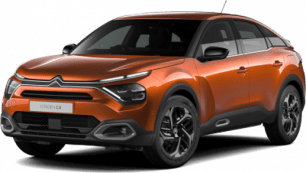The Polestar 2's cabin is generous up front with plenty of leg- and headroom to enjoy. You don't have to jostle for premium armrest position, either, which is nice given you still feel 'tucked' into the car.
A feeling that is enhanced by the solid, and rather tall, centre console that divides you from your co-pilot.
The electric front seats are delightfully comfortable with their padding and Nappa leather trim. Both feature four-way adjustable lumbar support and extendable under thigh support.
The heat and ventilation functions will ensure comfort, no matter the season but the ventilation system is quite loud.
In the rear, space is tight with my 168cm (5'6") height just fitting behind my driving position. The footwells seem cosy as well due to the limited under-seat space but the seats are fairly comfortable, if narrow.
However, the small door apertures in the rear and the narrow seats make it feel more suited as a four- than a five-seater.
Individual storage options are okay throughout the car with a couple of cupholders in each row, drink bottle holders in the front door storage bins, as well as a middle console and glove box.
There are two skinny shelves on either side of the centre console that would reasonably fit a wallet or phone and the rear also get two map pockets.
Amenities in the rear are enough to satisfy a mature occupant on a longer journey as the outboard seats feature a heat function and there are directional air vents, a fold down armrest and two USB-C ports.
Front occupants enjoy two USB-C ports and a wireless charging pad to charge their devices.
The rest of the technology is a bit awkward to use. The 11.2-inch touchscreen multimedia system is responsive to touch but you can't access a lot of basic information on it and I didn't like how the climate control is embedded in it as you have to touch the screen a few times to even see the controls.
The 12.3-inch digital instrument panel looks nice but isn't all that customisable. It takes a while to get used to how to access all of its functions, too.
It's easy to connect to the wired Apple CarPlay and there is wired Android Auto and in-built google apps, too.
The optioned Harman Kardon sound system with its 13 speakers means you can listen to your music as if you're in a private show performed by your favourite artist!
To round out the practicality of this sedan, the boot is large enough to carry your gear at 405L and the large compartment underneath the floor is super handy to store smaller items.
There is a panel that lifts up to make a cosier storage area, say if you only had a couple of bags of groceries you didn't want rolling around.
And because the Polestar 2 lacks an engine, there is frunk storage of 41L at the front which is perfect for any charging cables.
The compromise for getting all of this space is that you only get a tyre inflator repair kit, which is housed in the frunk storage area.
And lastly, having a powered tailgate is always a bonus but I miss having a good old-fashioned button on the boot lid to open it.

